This week, after over thirty years with another publisher, a new interstellar species arrives at Marvel Comics with the debut of the ongoing Alien series! Does the xenomorphs’ first outing from the House of Ideas set itself apart from its predecessors?
We’ve got a review of Alien #1, as well as a Rapid Rundown of other new Marvel Comics titles, all ahead in this week’s installment of The Marvel Rundown!
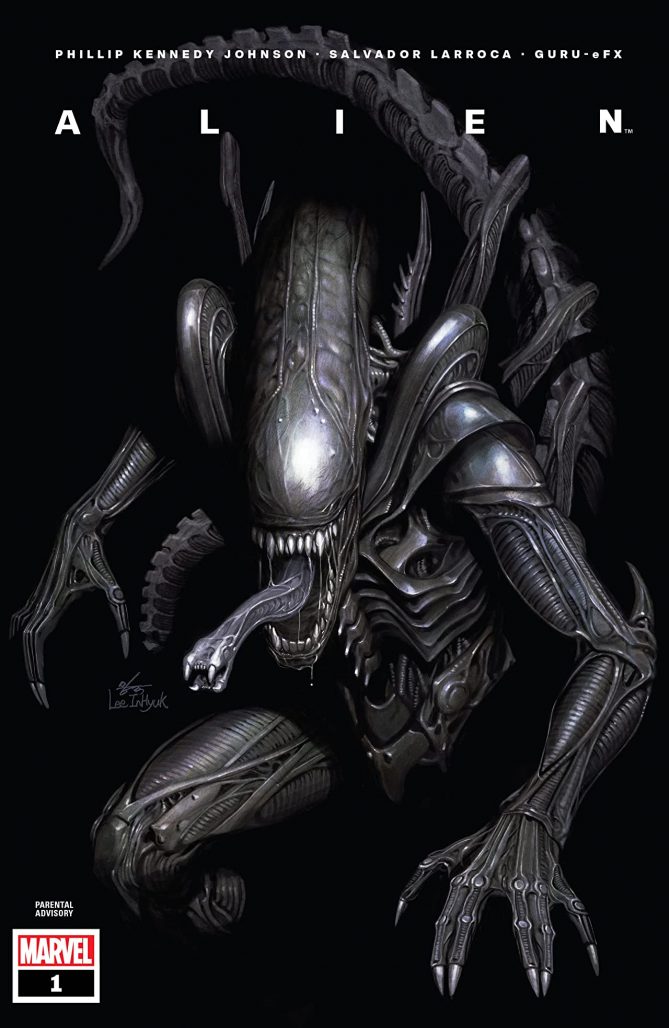
Alien #1
Writer: Phillip Kennedy Johnson
Artist: Salvador Larroca
Color Artist: Guru-eFX
Letterer: VC’s Clayton Cowles
Cover Artist: InHyuk Lee
The first issue of the new Marvel Alien series has a lot of things it needs to do. For readers wholly unfamiliar with the franchise, it needs to introduce the key concepts and players of the universe in an interesting manner. For those who are well-versed in all things Alien, it needs to set up a story that’s not a rehash of what’s been seen before. For everyone, it needs to introduce compelling characters and be entertaining enough that they’ll want to come back for more. After reading the issue, though, I’m not sure how well Alien #1 accomplished any of those goals.
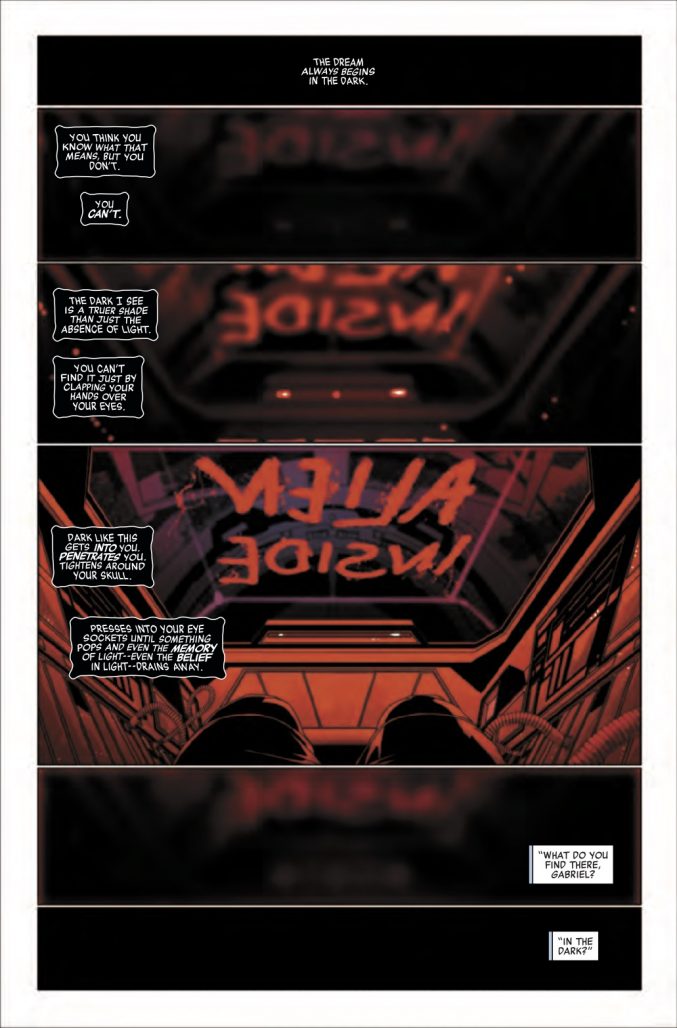
Written by Phillip Kennedy Johnson, illustrated by Salvador Larroca and Guru-eFX, and lettered by Clayton Cowles, Alien #1 introduces Gabriel Cruz, a recently retired Weyand-Yutani employee who returns to Earth for the first time in years to try to reconnect with his son, and who suffers from horrific flashbacks to and dreams of a xenomorph attack that he somehow survived. The mystery surrounding Cruz’s past alien encounter, and his relationship with a Bishop model android that is basically his therapist, are both extremely engaging plotlines, but a central element of the issue, the strained dynamic between Gabriel and his son, Danny, feels tired and uninspired. After writing a nuanced, revelatory story about the relationship between a father and son in this month’s issues of Superman and Action Comics, Johnson’s tale here of an absentee father trying to connect with a son who is not only uninterested in doing so, but who is actively — and dangerously — rebelling against everything his father stands for, could not feel more standard and predictable. Where that leads Danny as the issue progresses somewhat redeems it, but it was still a disappointingly rote path to take to get to the good stuff.
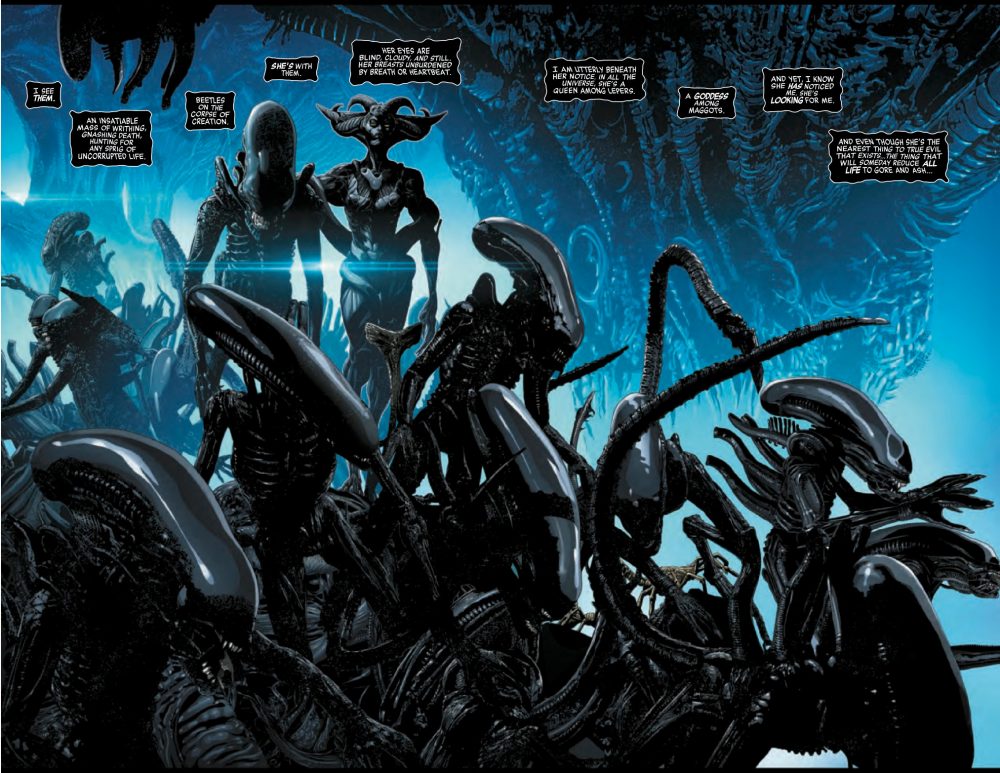
It’s also hard not to notice that Alien #1 is an extremely male-dominated comic. Danny has a girlfriend, who we see pushing him into betraying his father’s trust in their first scene, and who doesn’t get a name until towards the end of the issue, after she shoots the second female character we meet, an unnamed Weyland-Yutani guard, in the face with a shotgun in the issue’s most truly shocking and unexpected moment of violence. The only other named female character is a Weyland-Yutani scientist who appears for a total of five panels before also being murdered. In fact, of the three people definitively shown being killed in this issue, two of them are women. I suppose it’s fine if you want all the main characters in your comic to be men (or male-presenting robots) — and perhaps there are more women to come, as it is only the first issue, after all — but for a franchise that is known for its iconic female protagonist, it feels like an odd choice to say the least to either sideline or outright kill the only female characters in the issue.
Salvador Larroca is no stranger to media tie-in comics, having worked for years on Marvel’s Star Wars titles. His heavy and obvious use of photo reference on those books was distracting to say the last, and I had hoped coming into Alien #1 that the nature of the series, which doesn’t use any characters from the movies, would mean he would get away from that. Unfortunately I’m not sure that’s the case, though — it certainly isn’t with the Bishop android, who’s the spitting image of late ‘80s Lance Henriksen. His figures all seem extremely posed, and even during tense scenes like a confrontation between Gabriel and Danny the characters are lifeless or completely static. There are scenes that are visually interesting and exciting, like Cruz’s dreams of the xenomorph attack or the issue’s closing action sequence, but they’re far outnumbered by the plot-heavy scenes filled with listless talking heads.
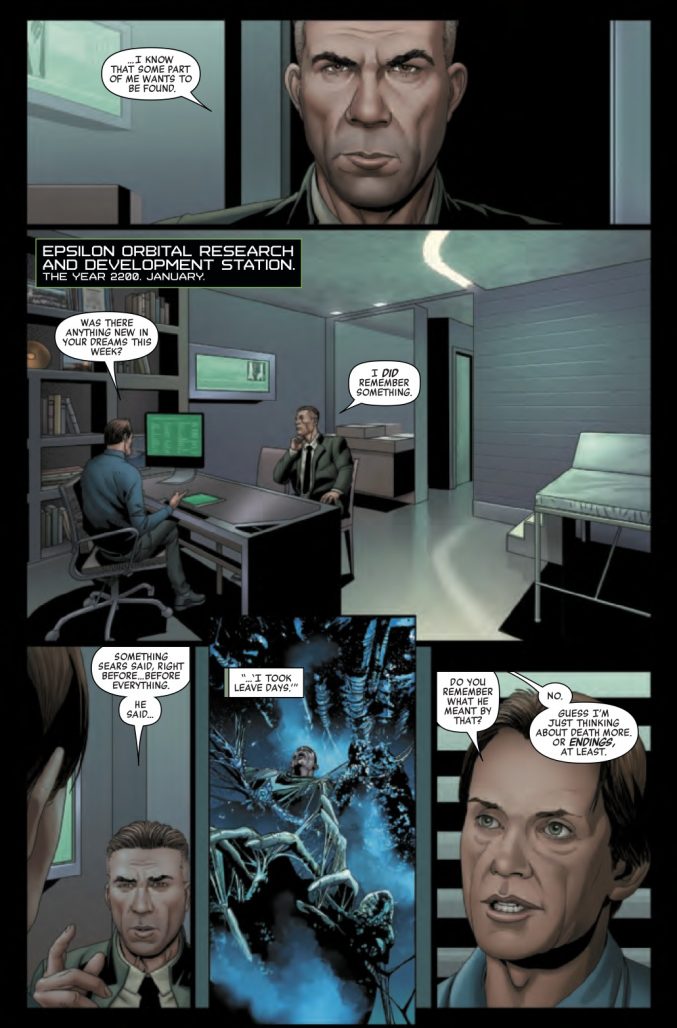
Overall at this point I can’t recommend the debut Marvel Alien comic to either new readers or longtime Alien fans. The characters and relationships so far are fairly trope-y, and the artwork definitely leaves something to be desired. I know Johnson has it in him to tell a compelling and inventive story, as he’s been doing it over at DC for the past few months already. Hopefully things will pick up and improve as the events of the issue’s close play out in the coming months.
Final Verdict: Skip.
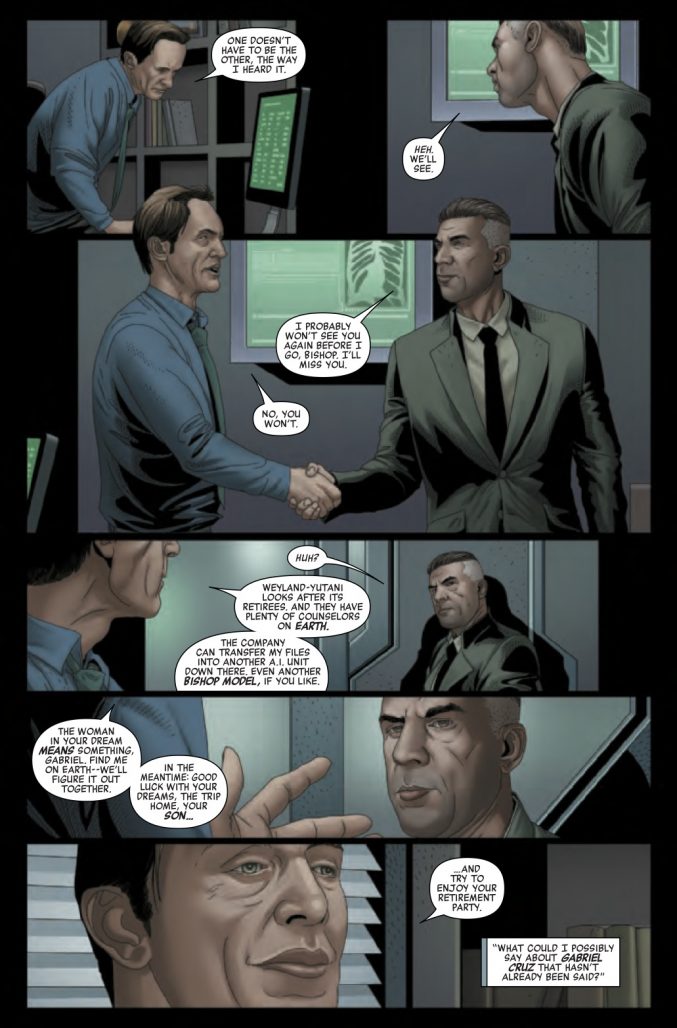
Rapid Rundown!
- Cable #9
- This issue is a solid transition and setup point for readers of Cable. After finding out that his much older future self’s clone Stryfe is still alive, Kid Cable is now on a mission to kill him. Like most of the current X-Books, this book has a piece of the Krakoan Society puzzle, clarifying some of the Krakoans Resurrection Protocols, which hint at a possible return of an older time-displaced mutant, and a showdown with Stryfe. Along the way writer Gerry Duggan and artist Phil Noto manage to squeeze in some teen angst and soap opera like family dynamics. Again a decent transition point in Cable’s story. —GC3
- Carnage: Black, White, & Blood #1
- I have a soft spot in my heart for Carnage, a character who was rising in prominence just as I was really getting in to comics. I particularly loved the fourteen-part “Maximum Carnage” storyline, so imagine my utter delight when the first story in Carnage: Black, White, & Blood #1, from Tini Howard, Ken Lashley, and Juan Fernandez, was set between the panels of that nearly thirty-year-old story. It also helps that the story was damn good, as were the issue’s other offerings, a Carnage-themed western by Ben Percy, Sara Pichelli, and Mattia Iacono, and a choose-your-own-adventure-style story by Al Ewing, John McCrea, and Iacono in which you ‘play’ as Carnage. If you never saw the appeal of Carnage before, reading this book just might change your mind. —JG
- Miles Morales: Spider-Man #24
- Miles has been through the ringer recently, what with dimension-hopping villains and invading symbiote gods proving a nuisance. Not to mention the whole anti-teen hero thing the government had going on for a while. This was a nice, mostly relaxing issue where Miles and Kamala Khan catch up in light of these recent events. For as low-stakes as everything was, this is one of my favourite issues of the series yet and even features a really intriguing scene where Miles loses his cool when confronting a slummy landlord, which is something I think a lot of people have been dealing with over the past year. In any case, it was a relatable issue and a nice palette-cleanser before the big Clone Saga begins next month. —HW
Next week: Beta Ray Bill, Silk, and Man-Thing!


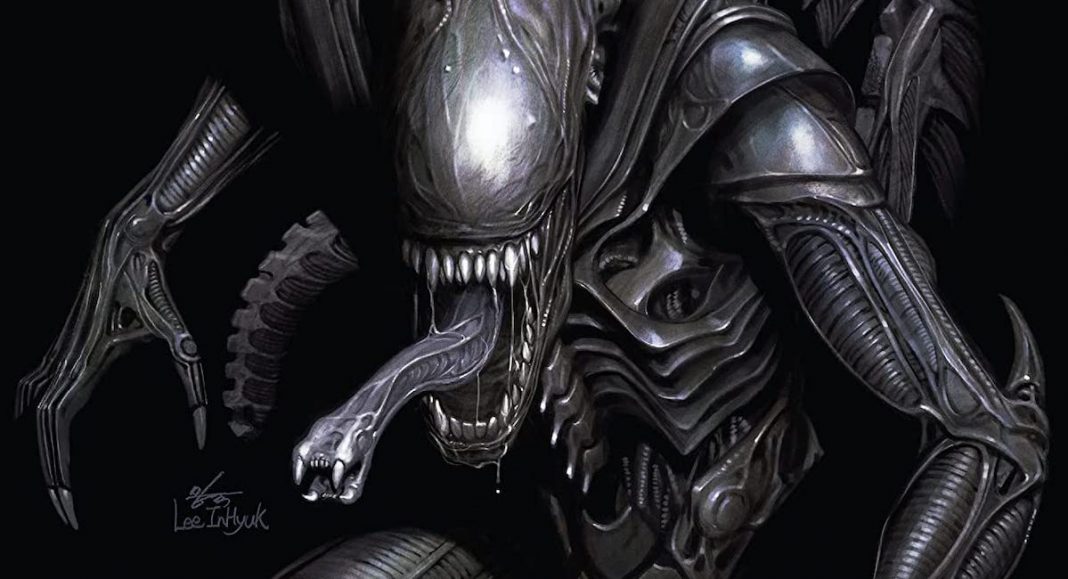
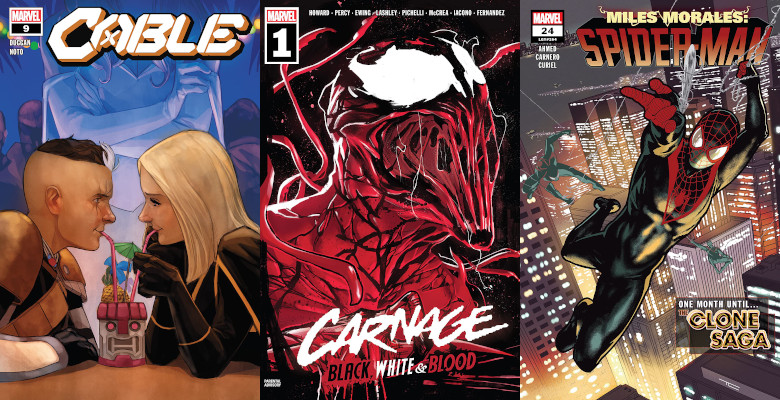
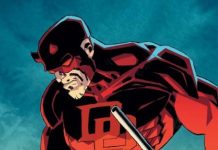
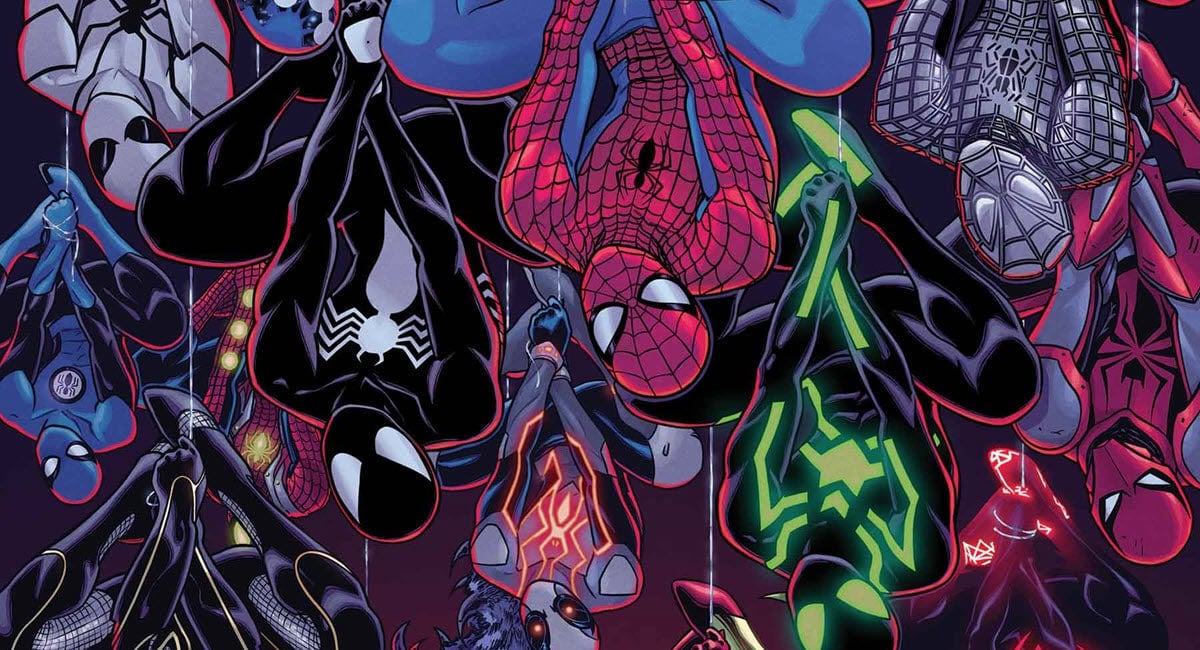




Alien #1’s art is shockingly bad. Wow!
Is this where we are at in society today? No female lead? Then for God’s sake, SKIP THIS! What a horrible. non-review. To literally judge a piece of writing based on the lack of a female lead that the reviewer somehow needs in order to justify giving the story a chance is asinine and incompetent. First, this art is terrific. It is realistic, it conveys, and it engages. It could be more fluid, yes. As they say, “flow” from one panel to the next, but honestly? It pops here. It provides everything the viewer needs. ‘Alien’ has been around since the 1970s. It is all-too easy to assume the reader “already knows” what is to come given the franchise’s longevity, and call the story short sighted as a result. Truthfully, this is a review that I find to be a targeted attempt at forced sexism and modern day tropes, tinged with a lack of overall understanding and maybe even a desire to criticize something just to bring it down, What we have here is horror blended with drama and mystery for the uninitiated. If you know the franchise lore, you have new characters playing within it. If you’re NOT familiar you have a treat that you should follow and I promise, will lead you to all the answers that you need – while scaring you a bit along the way.
The art in Alien is so obviously traced NECA toys should get cover credit.
This review is full of crap! Because there isn’t enough female characters, that’s why you say it’s worth skipping?! Did you not read the damn book?! It’s the first issue! All the characters of the series haven’t been introduced yet, we don’t know who all the characters are gonna be (and their genders) in the whole story, and if all the characters were introduced in this issue, let’s just say without spoiling anything, there wouldn’t be a reason for another issue. As far as the art work, it’s some of the best I’ve seen regarding Aliens! And I own a lot of the comics. Aliens Female War, one of my favorite Aliens series, the artwork in Marvel’s Alien #1 beats it no contest! Regarding the story for new readers, yes, it is not telling the new reader everything, but its not supposed to on the first issue. It’s called building suspense, interest, etc. If anyone who is wondering if they should get into this series, and is fortunate enough to read this comment, take it from me, don’t listen to this bull$&it review, it’s worth a read. Yes, if you’re new to the series, you’re gonna have questions, but they’ll be answered in the upcoming issues. It’s a suspenseful ride, enjoy it.
Joe’s review goes into many aspects of the comic, which lead to the end result: skip. Commenters who only highlight his observation that women get a raw deal, and take offence to that observation, are the ones who have an agenda.
Is the franchise played out? Perhaps there needs to be a clean break from the strait jacket of the canonical universe? Star Trek Discovery’s producers made the paradigm shift to be relieved from having all the previous history by jumping hundreds of years into the future.
Bishop series of artificial person ties the comic firmly into Alien canon. The relationship of father son echoes that of the YA Alien novel “Echo”.
So the story is not so unique. But it is only the first issue.
The artwork is similar to this generation of digital artists. The design elements and layout is uninspiring. A lot of panels with misplaced camera angels that do not give visual impact to the pacing of the narrative. The character design and lack of emotion that is emphasized by the lack of dramatic lighting. Distracting placement of sound effects mar the visual flow.
Looking back to the first Alien series artwork by Mark A. Nelsen and there is a qualitative difference between the two artists.
Perhaps it has to do with the way their artwork is created. Pen/brush and paper versus digital medium Apps. The way a comic book is colored is also different.
Comments are closed.